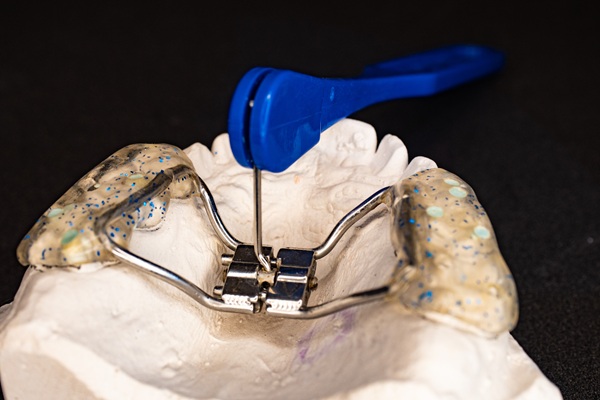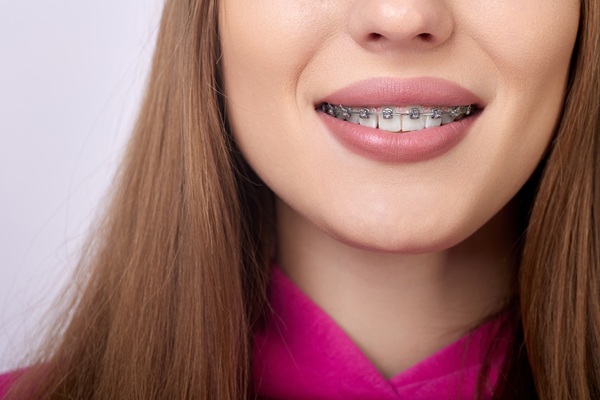What Are Palatal Expanders in Orthodontics?

Palatal expanders are used to widen a patient’s palate (the roof of the mouth), creating more space for their top set of teeth. The American Association of Orthodontists recommends bringing your child in for their first bite assessment by the time they reach seven.
At this stage in their development, their bite should be established enough to spot orthodontic issues. Early detection is crucial since the developing jaw and craniofacial structures of children are considerably easier to mold than the structures of adults. This can shorten the length of treatment by more than half.
Some of the issues that indicate a patient’s palate might not have enough space include:
- Impacted teeth
- Crossbites
- Crowded teeth
Improving bites with palatal expanders
Some people are born with smaller palates due to genetic and other factors. Not having enough space in the roof of the mouth leads to orthodontic issues as the child’s permanent teeth start to erupt. Expanders work by gently applying force on the wearer’s palate, encouraging it to grow. This creates more space on the jaw, reducing the risk of orthodontic issues in the future. Expanders also make correcting any existing orthodontic issues easier once space has been created on the patient’s jaw.
Treatments times with palatal expanders are typically somewhere between three to twelve months. Pediatric orthodontists often keep the appliance in place even after the desired growth has been achieved so the palate can solidify in its new shape.
Expanders can be removable or fixed. They are customized for each child, so they fit correctly along the roof of their mouth. The most recommended types of palatal expanders include:
- Rapid palatal expanders: These are the most commonly used type of expanders. They fit parallel to the molars in the upper dental arch. RPEs with a central screw that is used to activate the device. The orthodontist provides the patient with a key that is used to manipulate the screw and gently push the palatal bones. Treatments with RPE are often completed within six months
- Removable palatal expander: These are recommended when a child’s palate only needs to be slightly expanded. The appliance looks like a retainer, but it comes with a center screw that works similarly to the ones that come with RPEs
- Mini-Implant Assisted RPE: These devices are typically recommended for older patients who did not get orthodontic treatments they needed when they were younger. Such patients require a more powerful appliance to expand their palate since their craniofacial structures have hardened at that point. Mini-Implant Assisted RPEs involve placing two to four mini-implants on parallel points on the patient’s palatal bones. These implants are linked with a center screw. As is the case with the other types of expanders, the screw is used to activate the device
Get your child off to a good start
Issues like a child’s palate not having enough room for their teeth are best addressed early while their bones are still developing. Give us a call or visit our Salt Lake City clinic to set up an appointment with our pediatric orthodontist.
Request an appointment here: https://omanaortho.com or call Omana Orthodontics at (801) 618-2801 for an appointment in our Salt Lake City office.
Check out what others are saying about our services on Yelp: Expanders in Salt Lake City, UT.
Related Posts
Orthodontics help straighten improperly aligned teeth. Teeth alignment problems can ruin the appearance of your smile and leave your teeth more vulnerable to issues like tooth decay and gum disease.Orthodontics uses devices like braces and clear aligners to improve the alignment of teeth by gradually pushing them to better positions over time. Common teeth alignment…
Damon braces offer an advanced orthodontic solution that prioritizes comfort, efficient movement, and a cleaner appearance. Unlike traditional systems that rely on elastic ties, this approach uses a self-ligating mechanism to guide teeth into position more smoothly. Patients seeking a modern way to achieve alignment often find that Damon braces support faster results, fewer office…
Orthodontics takes commitment and patience on the part of the patient and their dentist. The process requires you to invest your time, mental energy, and money in the quest for an improved smile. The good news is that your investment can pay off in a big way. Your oral health can improve, your confidence can…
Orthodontics can be used to transform your smile by improving the alignment of your teeth. Poor alignment can ruin the aesthetics of even the whitest smile and make teeth more vulnerable to tooth decay. Issues that orthodontics can be used to treat include:Crooked teethCrossbitesOverbitesOverjetsUnderbitesPeople who would like to improve the alignment of their teeth now…


